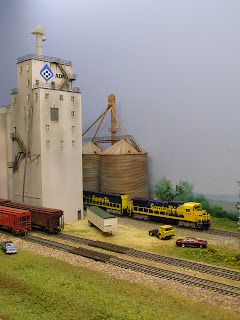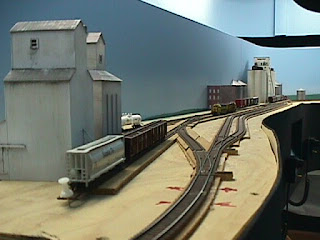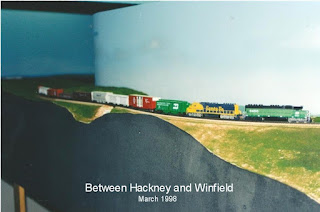DC Throttles
I mentioned in my last post that there were throttles hanging beside my control panels, today I thought I would let you know a little about them.
One of the newer members of Melbntrak Model Railway club back in 1988 /89 Jim was a very accomplished computer technician and more than capable with model railroad wiring as well. Jim built for me a very well constructed 5 amp transformer (that never failed) about the size of four house bricks and weighed almost as much. Of course this was long before the range of wall warts now available. He also designed a small throttle that would work on the N trak modules and could very easily be adapted to work on my new SFRSD layout.
The hand held portion consisted of only a pot and a reversing switch encased in a small plastic box connected to the layout via 5 core CB radio flexible cables. The guts of the system were built to fit neatly out of the way under the layout adjacent to where the throttle was to be used.
 |
| The section of the drawing on the left is the hand module. | | | |
|
Once Jim had given me a parts list that would make 10 throttles it was just a matter of taking a trip to the radio shop and acquiring the parts.
I am very fortunate to have a group of friends who enjoy working on one an others layouts. In this instance Ron and Greg both have telecommunications backgrounds and so were very eager to assist in putting all of these parts together. So one Saturday afternoon as I did work preparing wires etc Ron and Greg were sitting below the "L Girders" on very small seats making small P.C.Boards on which to mount all the bits. In no time flat these little units were made and connected to the transformer and the hand modules with very few issues. One of the nice touches that I did not find out about until 2009 when I converted to D.C.C was that the guys had signed and dated each one. Nice touch guys, loved it.
These throttles lasted and performed flawlessly at all of my operating sessions up until 2009 when I changed to D.C.C. Their simple design allowed us to run D.C. for years without giving any problems. Thanks to Jim, Ron and Greg.
Thanks for stopping by.
Rod.













.JPG)





















